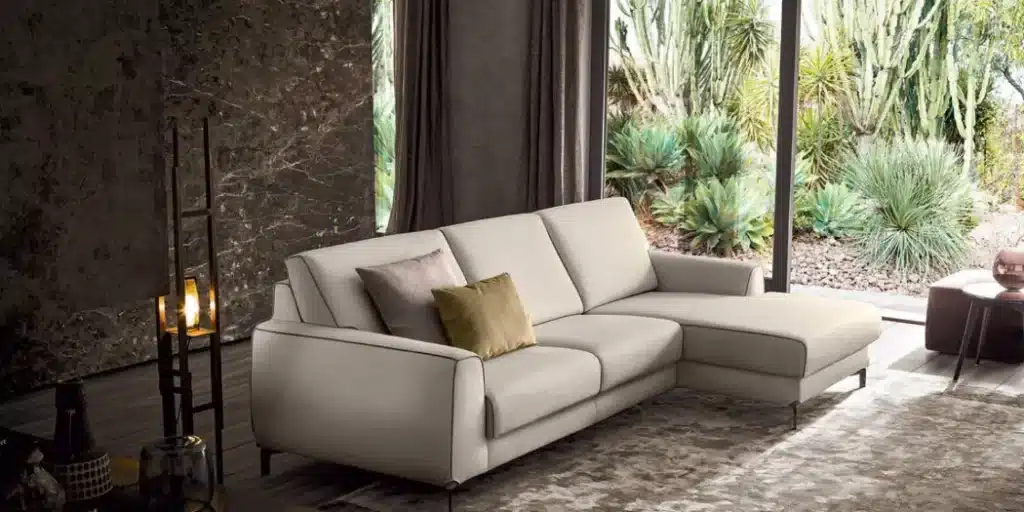Choosing the right sofa bed is more than just a purchasing decision; it’s a strategic investment in your home and lifestyle. Sofa beds serve dual purposes, offering a comfortable place to sit during the day and a cozy sleeping spot at night. Whether you live in a compact apartment or a spacious house, a sofa bed can be an excellent addition to your living space. From understanding the different types of sofa beds available to considering the size, design, mattress type, ease of use, and price, there are several factors that you need to take into account.
Steps in Choosing Ideal Sofa Beds

Choosing the right sofa bed involves several steps, each crucial in ensuring you end up with a piece of furniture that suits your needs, fits your space, and provides comfort and functionality. Here are the procedures involved:
1. Identify Your Needs
Firstly, ascertain why you need a sofa bed. Will it be used daily or occasionally? Do you need it primarily for seating, sleeping, or both? Will it be used by adults, children, or guests? The answers to these questions will guide your selection process.
2. Measure Your Space
Before shopping, measure the space where you plan to place the sofa bed. Remember to measure the fully extended length of the sofa bed to ensure it will fit in your space when unfolded into a bed.
3. Consider Comfort
Try out different convertible sofas to determine which one is most comfortable for you. Check the firmness of the cushions when used as a sofa and the comfort of the mattress when used as a bed. The mattress should be thick enough to provide support and comfort.
4. Check Functionality
The mechanism of the sofa bed should be easy to operate. You should be able to transition it from a sofa to a bed and vice versa without any hassle. Also, consider how easy it is to maintain and clean the sofa bed.
5. Evaluate Design
Choose a design that complements your existing decor. Convertible sofas come in a variety of styles, colors, and materials so you can find one that suits your aesthetic preferences.
6. Set a Budget
Determine how much you’re willing to spend on a sofa bed. While it’s important to find an affordable option, don’t compromise on quality. A good-quality sofa bed is an investment that should last for many years.
7. Examine Durability
Check the construction of the sofa bed. It should have a sturdy frame, high-quality mattress, and durable upholstery. A well-constructed sofa bed will withstand regular use and be a long-lasting addition to your home.
8. Read Reviews
Before making a purchase, read online reviews to get a sense of the sofa bed’s quality, comfort, and durability. Reviews can provide valuable insights from individuals who have already used the product.
9. Consider Delivery and Assembly
Finally, consider how the sofa bed will be delivered and whether assembly is required. If assembly is needed, ensure you’re comfortable with the process or that professional assembly services are available.
Cost Considerations

1. Material Quality
The quality of the material used in the sofa bed directly impacts its price. High-quality materials like real leather, solid hardwood frames, and high-density foam or memory foam mattresses tend to be more expensive but also offer greater durability and comfort. Here are the various components that constitute a sofa bed:
- Real Leather
Real leather is a premium material often used in high-end convertible sofas. It is known for its durability, easy maintenance, and timeless appeal. Leather sofa beds can withstand wear and tear over the years and still maintain their look. They are typically more expensive due to the cost of sourcing and processing the leather. However, they provide a luxurious feel and can be a stylish addition to your living space. - Solid Hardwood Frames
The frame of the sofa bed plays a pivotal role in its durability. Solid hardwood frames, such as oak, ash, or beech, are robust and long-lasting. These types of wood resist warping and breaking better than softer woods or other materials like metal or plastic. While furniture with solid hardwood frames can be more costly, it is often worth the investment for their longevity. - High-Density Foam or Memory Foam Mattresses
The mattress quality can significantly impact the comfort level of the sofa bed. High-density foam mattresses provide good support and retain their shape over time, making them a durable choice. Memory foam mattresses, on the other hand, offer superior comfort by contouring to the body and providing pressure relief. These types of mattresses tend to be more expensive than their lower-density counterparts or innerspring mattresses but can offer a more comfortable sleep.
2. Size
The size of the sofa bed also affects the price. Larger sizes, such as king or queen sofa beds, typically cost more than smaller sizes like twin or full sofa beds.
3. Mechanism Type
The type of mechanism used to convert the sofa into a bed can also impact the price. Pull-out sofa beds with innerspring mattresses are generally more expensive due to their more complex mechanism and the inclusion of a full-size mattress. In contrast, futon-style or click-clack sofa beds tend to be less expensive.
4. Brand
The brand of the sofa bed can also influence the price. Well-known brands with a reputation for high-quality products often charge higher prices. However, it’s important to note that a higher price doesn’t always guarantee better quality.
5. Design and Style
More intricate designs or unique styles may carry a higher price tag. For example, a vintage-style leather sofa bed will likely cost more than a simple, modern fabric one.
6. Customization Options
Convertible sofas with customization options, such as choice of fabric, color, or additional features like built-in storage, may cost more than standard, off-the-shelf models.
7. Maintenance and Durability
While not an upfront cost, considering the expected lifespan and maintenance requirements of the sofa bed can impact its overall cost. A cheaper model may need replacing sooner, or require more upkeep, which could result in higher costs over time.
